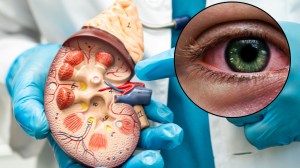Racing to Beat the Maternal Clock
In the nearly 30 years since Louise Brown made history as the first test-tube baby...

In the nearly 30 years since Louise Brown made history as the first test-tube baby, more than one million infants have been conceived by means of in vitro fertilisation. Assisted reproductive technologies continue to advance, but increasingly they are pushing against one of nature’s great barriers to fertility: maternal age. The new options to extend fertility are testing the limits of who can get pregnant, and when. They are also raising fresh medical, economic and ethical concerns.
Whereas scientists for decades have been freezing human embryos for later implantation into the womb, now a process called vitrification is enabling technicians to flash-freeze unfertilised human eggs in a matter of seconds, greatly improving their survival rates. The process is considered superior to conventional slow-freezing methods because it prevents the formation of ice crystals in the egg that could damage DNA. Sperm later meets thawed egg through in vitro fertilization, and the resulting embryo is implanted in the womb.
The technique increases the chances of successful pregnancy later in life for a woman who wants to defer starting a family. “I think this will emancipate women as much as the birth control pill did in 1960,” said Dr Sherman Silber, a fertility specialist in St Louis, one of a limited number of doctors in the US to offer the novel procedure. In a recent study in Spain, there were no differences in pregnancy rates in women undergoing in vitro fertilisation with embryos from either fresh or flash-frozen eggs.
About 45 per cent in each group conceived.
The experimental procedure, however, is not without its sacrifices — and skeptics. Potent drugs must be used to stimulate a patient’s ovaries, and then the eggs must be aspirated while she is sedated. Vitrification is also expensive, often more than $5,000 just for freezing the eggs, in addition to the cost of fertilization.
Vitrification may improve the odds that older women will be able to conceive from eggs they saved when they were younger, but it doesn’t offer much to middle-aged women whose eggs were never frozen. There’s little point in a woman preserving her eggs if she’s over 35 years old, when fertility starts to diminish. Younger the eggs, the better their quality.
Still, many fertility centers limit egg-freezing services only to younger cancer patients facing treatments that will leave them sterile. Patients usually are warned that frozen eggs are not as reliable as frozen embryos and sperm because of the egg’s extreme sensitivity to temperature. “I’ve had to tell young women facing cancer treatment and the loss of ovarian function that it’s not really reliable,” said Dr Richard Marrs, managing partner of California Fertility Partners in Los Angeles. “The odds are better for them if they freeze embryos.”
Trying to improve the odds, some researchers, including Dr Silber, have begun freezing not only eggs but ovarian tissue as well. Thin slices from the ovary are removed through a small incision below the navel, preserved with slow freezing, then transplanted back into the woman’s body when she’s ready to try to get pregnant — in some cases years later. The aim is to have the tissue grow and start functioning again, triggering normal ovulation cycles and eventually leading to conception.
The American Society for Reproductive Medicine has acknowledged the potential of frozen eggs and ovarian tissues, but for now recommends these experimental techniques only for younger women undergoing cancer treatments, not for those postponing pregnancy for lifestyle reasons like pursuing a career. “The biological clock is real for most women, and that has to be recognised,” said Sean Tipton, a spokesman for the society.
More widely used fertility techniques that were developed to improve the odds of a successful pregnancy in older women, like pre-implantation genetic diagnosis, or PGD, are not without their controversies, too. Developed about a decade ago to weed out embryos with genetic abnormalities prior to implantation, PGD might one day help parents select not just a child’s gender, but perhaps his eye color or other characteristics. Many reputable clinics find it a slippery ethical slope and employ the procedure only on a limited basis. “We use PGD, but we’re very selective when we use it,” Dr Marrs said. “The prime reason to do it is if you have a family history of single gene disorders like Tay-Sachs, Huntington’s chorea, cystic fibrosis.”
Furthermore, critics claim, PGD may have resulted in clinics discarding healthy embryos. Several studies have shown that many genetic abnormalities appearing in a three-day-old embryo correct themselves by the fifth day. As a result of this finding, a number of clinics now wait until the fifth day to test and transfer embryos into the woman’s uterus. Doctors also tend to transfer fewer of them, thereby reducing the incidence of multiple births and its attendant complications, including premature labor and low birth weight.
Despite these refinements in assisted reproductive technologies, fertility scientists have not been able to change the basic fact that a woman’s fertility diminishes with age.
“The younger the woman, the better her chances of fertility,” said Dr Zev Rosenwaks, director of The Center for Reproductive Medicine and Infertility at New York-Presbyterian Hospital. “If there are any signs of infertility — absence of periods, irregular period — couples should pay attention. Seek help earlier rather than later.”



- 01
- 02
- 03
- 04
- 05




























